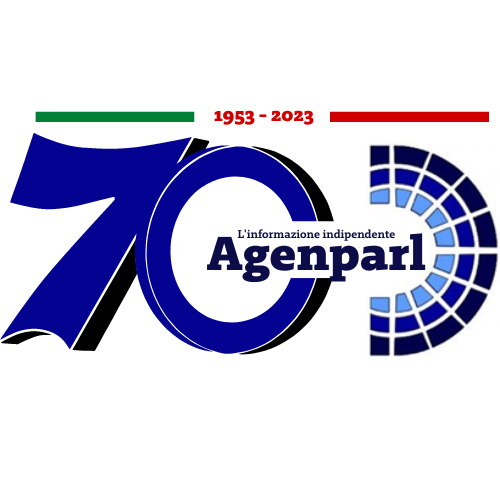 (AGENPARL) - Roma, 5 Settembre 2025
(AGENPARL) - Roma, 5 Settembre 2025(AGENPARL) – Fri 05 September 2025 [NewsMedia_NewsRelease]
FAO Food Price Index virtually unchanged in August
New forecasts point to growth in global cereal output, utilization, stocks and trade
05/09/2025
Rome – The benchmark of world food commodity prices remained largely unchanged in August, as increases in meat, sugar and vegetable oil prices offset declines in cereal and dairy quotations, according to the new report released by the Food and Agriculture Organization of the United Nations (FAO) Friday.
The FAO Food Price Index, which tracks monthly changes in the international prices of a set of globally-traded food commodities, averaged 130.1 points in August, marginally up from the revised July level of 130.0 points and 6.9 percent higher than a year earlier.
The FAO Vegetable Oil Price Index increased by 1.4 percent in August from July, reaching its highest level in over three years. Palm, sunflower and rapeseed oil quotations all increased, partly influenced by Indonesia’s intention to further raise its biodiesel blending mandate next year, while world soy oil prices edged lower amid prospects of ample global soybean supplies in the marketing year ahead.
The FAO Cereal Price Index declined by 0.8 percent from July. International wheat prices dropped, driven by larger harvests in the European Union and the Russian Federation, while world maize prices rose, due partly to increased demand for feed use and ethanol production in the United States of America. The FAO All Rice Price Index eased, weighed down by lower Indica prices amid continued fierce competition among exporters.
The FAO Meat Price Index increased by 0.6 percent in August, reaching a new all-time high, led by rising international bovine meat prices, underpinned by strong demand in the United States of America and robust import demand from China, which respectively boosted Australian and Brazilian export quotations. Ovine prices also rose, pig meat prices remained broadly stable, while poultry meat quotations declined amid ample exportable supplies from Brazil.
The FAO Dairy Price Index declined by 1.3 percent from July, with butter, cheese and whole milk powder quotations down amid subdued import demand from key Asian markets.
The FAO Sugar Price Index rose slightly, by 0.2 percent from July after five consecutive monthly declines, driven primarily by concerns over sugarcane production and yields in Brazil, as well as stronger global import demand. Prospects for larger crops in India and Thailand contained the price increase.
More details are available here.
Abundant maize output forecast for the year ahead
FAO also released on Friday its new forecast for global cereal production in 2025, now pegged at 2 961 million tonnes – a new record high and 3.5 percent above last year’s level.
The new Cereal Supply and Demand Brief attributed the upward revisions to significant increases in the maize output forecasts for Brazil and the United States of America. Global production of coarse grains, which includes maize, is now expected to reach 1 601 million tonnes, a 5.9 increase from 2024, including a notable rise in sorghum output.
Meanwhile, FAO trimmed its forecast for world wheat output to 804.9 million tonnes, still up around 0.8 percent from last year. The new forecast includes weather-driven lower yield prospects in China and higher yields in the European Union. World rice production, on the other hand, is expected to increase by 1.0 percent to a record high of 555.5 million tonnes, with expansions in Bangladesh, Brazil, China, India, and most notably Indonesia expected to more than offset anticipated declines in Madagascar, Nepal, the United States of America and Thailand.
World cereal total utilization in 2025/26 is now forecast to rise to 2 922 million tonnes, up 1.6 percent from the previous year, led in part by expected increased uses of maize and wheat for animal and aquaculture feed.
Global cereal stocks are forecast to expand by 3.7 percent by the end of 2026 to reach a record high of 898.7 million tonnes. Based on the new forecasts, the global cereal stocks-to-use ratio in 2025/26 is expected to reach 30.6 percent, nearly one percentage point higher than the previous season, confirming a comfortable supply outlook globally.
FAO’s new forecasts also include a 1.4 percent annual increase in international cereal trade, now predicted to reach 493.4 million tonnes. The growth is supported by expectations of abundant exportable supplies of maize, strong demand for wheat from China, Pakistan, Syrian Arabic Republic and Türkiye, and upwardly revised import forecasts for rice for Bangladesh, Ghana and Guinea-Bissau.
More details are available here.
The Agricultural Market Information System (AMIS), hosted by FAO, also published its monthly Market Monitor on Friday. In addition to the regular market updates, the report noted the climbing prices of nitrogen fertilizers and warned that fertilizers are becoming less affordable compared to crop prices in many regions, which could impact application rates.
________________________________
Contact
Christopher Emsden
FAO News and Media (Rome)
FAO News and Media
________________________________
Journalists & editors:
Online tools:
Video download via FAO Digital Media Hub
Photos via the FAO Digital Media Hub and the FAOnews Flickr account
FAO’s online newsroom
RSS feed of FAO news releases
